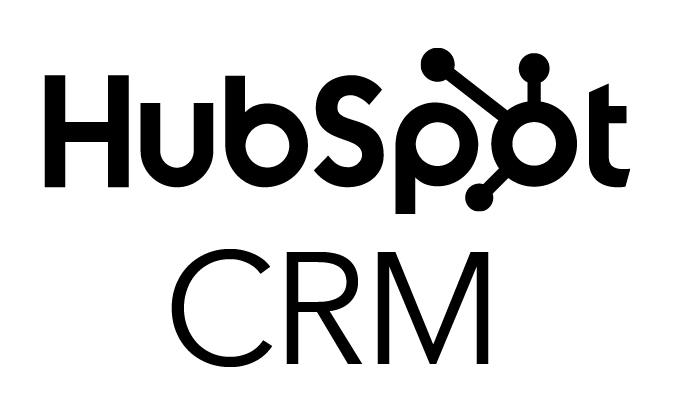How to Start an Amazon Business
Amazon has taken over the ecommerce world over the past 10 years. Having been in ecommerce for almost 20 years myself, I can attest to the fact that more and more internet shopping (which continues to grow every year) in the United States is happening on Amazon and less on regular old mom and pop retail stores. The latest number I’ve seen is 44% of online retail in the US is done on Amazon. Needless to say, that’s a ton.
There are several different ways a person can start an Amazon business. I am going to describe them in more detail below. Here’s a quick summary.
Retail Arbitrage: You buy products from local retail stores at a large discount (usually from clearance sales) and sell them on Amazon.
Online Arbitrage: You buy products from online retailers at a large discount (again, normally these are clearance items) and sell them on Amazon.
Private Labeling: You find a manufacturer that makes a product that you think will be popular and profitable to sell, and you have the manufacturer customize the product with your
Selling Your Own Manufactured Products : This strategy usually takes more startup time and capital. In this case, you design a product and figure out an efficient way to have it manufactured. In this case, you’re simply using Amazon as an effective way to launch your specific product.
Become an Amazon Selling Consultant for an Existing Brand: Despite the fact that Amazon tends to be in the news so consistently, there are many companies, even older, well-established ones, that have yet to start selling their products on Amazon. If you are willing to become an expert at doing Amazon marketing, you can become a sales consultant for one or more product lines and take a commission on sales that go through Amazon.
There are advantages and disadvantages to each of these various ways of using Amazon to make a living.
My Own Amazon Business Story
I’ve been doing ecommerce sales for my career since 1999. When I first started, it was all about getting traffic from Google using SEO strategies. Several years later, along came Facebook, Pinterest and other social media platforms, each of which served as a avenue for steering traffic and attention towards my products. My model involved finding suppliers that would drop their products (I even made a Udemy course showing how I did it), advertising their products using a shopping cart system on my website, and driving traffic to my product pages, mostly from Google.
This drop-ship ecommerce model has worked great for me for a couple decades. In fact, I still have a few stores selling children’s formal clothing, casual wear, and safety equipment running. They sell a few thousand dollars each month, which is a nice bonus.
However, the majority of my income now comes from selling products on Amazon, where I’ve discovered that the time and effort required to get from a brand new business to over a million dollars in sales is much less than what I’ve experienced in the past using SEO to get traffic from Google.
A few years ago, a friend of mine mentioned that Amazon had opened up a Handmade section for sellers. I went to Amazon’s Seller Central and signed up. Then I added a few home decor products to my store and didn’t think about it for a couple days afterward, as I was taking my family on a Christmas vacation trip. When I checked my email a couple days later, I noticed that I had a few orders in the queue. I was surprised, since I hadn’t done anything to market my Amazon store or the few products I’d listed.
Over the past three years, I’ve been able to develop the business beyond a hobby side store into a very good income. This year we will close in on $1M in sales, and the business continues to grow.
Amazon Retail Arbitrage
Retail arbitrage is often considered a starter method for getting started with Amazon sales. To do retail arbitrage successfully, you’ll need to find local deals on products and sell those products on Amazon. As you’re shopping, you search for deeply discounted products, look up those products on Amazon using their UPC codes, and determine whether the price they’re selling for on Amazon and their sales rank (which is an indicator of how quickly your inventory will be sold) are good enough to purchase the product.
I’ve found that retail arbitrage can take some trial and error, getting to know your local retailers and figuring out patterns for clearance and finding good deals. For most people, it’s not easy, but if you’re determined enough, you can start making some solid income within a month.
There are lots of how-to videos for getting started with retail arbitrage. Here’s one of the best video tutorials I’ve seen on getting started with Amazon retail arbitrage.
Amazon Online Arbitrage
Online arbitrage is similar to retail arbitrage. You find products that are steeply discounted, and you purchase them, then sell them on Amazon. Online arbitrage gives you access to many more retailers much more quickly than traveling from store to store as you do with brick and mortar retail arbitrage. However, because of how much easier it is to do online shopping, you’ll likely find more competition with online arbitrage. If you can figure out a good product niche and/or a set of online retailers who’s discounting and clearancing patterns you figure out, you can develop a consistent stream of income using this method of building an Amazon business.
Many people use retail and online arbitrage to start out getting familiar with the Amazon ecosystem and building up a cash reserve that they can use to break out and develop their own product line to sell on Amazon.
This video explains more details about how to do online arbitrage effectively.
Amazon Private Label
Private labeling involves doing more work on the product sourcing side than retail arbitrage and online arbitrage, which rely upon sourcing products that already have built up some popularity. It also typically involves more investment to source the product.
Many private label sellers source their products using Alibaba.com, the most comprehensive directory of manufacturers (the majority of them in China). After doing some product research on Amazon to determine what to sell, they find a supplier who make products in that niche. They typically hire a Chinese manufacturer to make a batch of those products for them, including adding their own branding, or “private label” to the product. They create a new UPC number for the product, then do a product launch on Amazon.
For the majority of private label sellers, the end goal is to create a business that runs autonomously. The business owner comes up with the product idea or “discovers” it, sources it from a manufacturer, launches the product on Amazon, then ultimately ships inventory into the Amazon warehouses so that orders can be fulfilled by Amazon through their FBA (Fulfillment by Amazon) program.
Manufacturing Your Own Brand for Amazon
This type of business really isn’t necessarily as much an Amazon business as it is the combination of a traditional product-based business that uses Amazon to increase sales. Because of the opportunity Amazon presents to sellers, there are startup companies who base a lot of their strategy on launching their newly developed product line on Amazon.
I recently became a partner in a business that fits this Amazon business model. Some friends of mine published a video of several of them at a family party playing a popular game called Junk in the Trunk. They published the video on Facebook that went viral, so they decided to make a product that would allow people to play the game without having to gather up tissue boxes, belts, and other items to play. Instead, we created our version of the dance game, called Twiggle, and we’ve got a strategy in place to sell a few hundred thousands of units in the next year.
Selling Others’ Products as an Amazon Sales Consultant
As I’ve developed my Amazon skills and as I’ve touted what’s possible on Amazon to friends and others, I’ve seen a pattern of referrals from people who have a product they want to market, but who aren’t yet on Amazon. Many of them have been successfully selling products for years, but still haven’t tried the Amazon route. There are thousands of people and small and medium- sized businesses in this situation.
If you can become an Amazon selling expert, there is a great opportunity for you to help companies get their products on Amazon, and take a commission on the sales that are generated from Amazon. Typically, an Amazon consultant in this type of arrangement will take a 20% commission on the net revenue (after Amazon has taken out its fees) from Amazon sales.
Being an Amazon consultant is the least risky (money-wise, time-wise it may be similar) of the Amazon business options I’ve described. You might start by doing it for free or for a much discounted rate for a company so that you can learn using their product line. Then, when you’ve built a reputation and confidence that you know what you’re doing, you’ll likely have people coming to you for your professional help.
Amazon Business Resources
Besides the most popular options I’ve described above for creating an Amazon business, there are a few other ways to make money on Amazon, including their Merch program (where you submit your original designs to be put made to order t-shirts printed by Amazon), writing ebooks, managing PPC campaigns for Amazon sellers, and more.
To help you get started with your Amazon business, I’m going to include a few resources I’ve used to help me with my Amazon businesses and as I’ve consulted other people with theirs.
The Million Dollar Case Study from Jungle Scout: This playlist includes several hours of videos explaining how to set up a private label business. The playlist walks you through how Greg Mercer and his team find, source, and launch products that net at least $1M each year.
Amazon’s A9 Search Algorithm: StartupBros.com published a technical article describing how Amazon’s search algorithm, called A9, determines which products to list at the top of their searches.
MerchantWords.com: This tool estimates how much monthly search volume Amazon exists for various phrases. I use this tool to find new products to create as well as to optimize my products for search phrases I’m not optimized for.
Helium 10: I used Helium 10 for lots of purposes with my Amazon business, including doing keyword research and tracking my product rankings for keywords I’m targeting.







